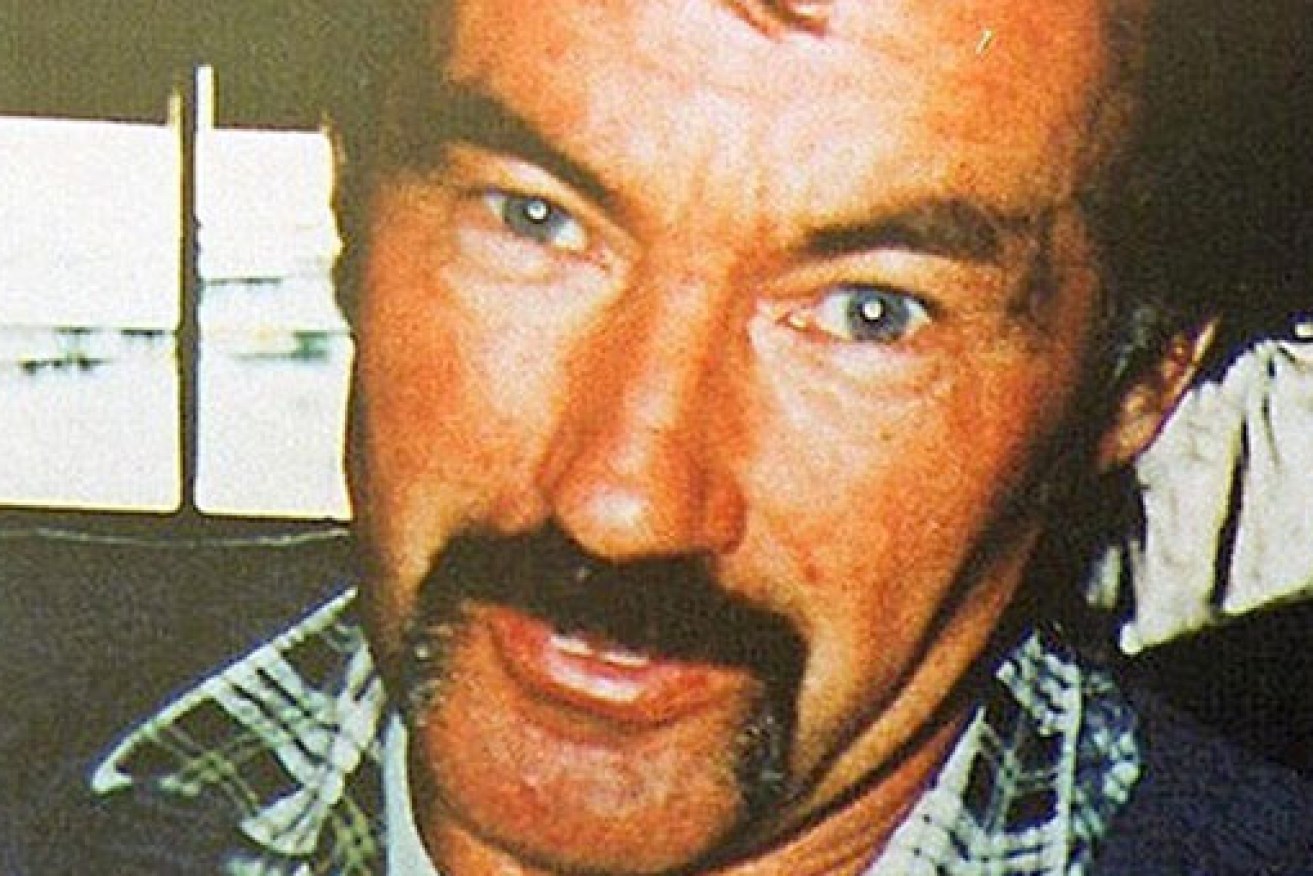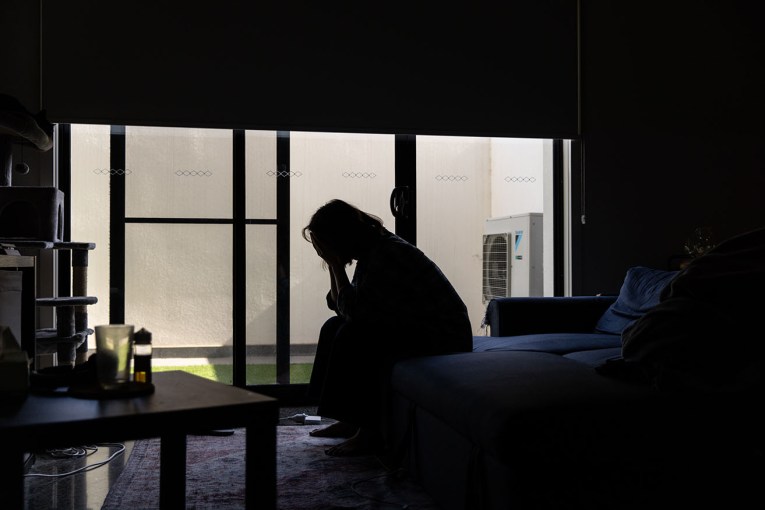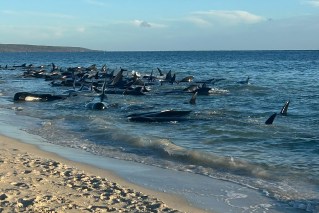Ivan Milat is dead, but the backpacker killer will forever haunt Australia

Ivan Milat was convicted in 1996 and has never shown remorse for his crimes. Photo: AAP
IVAN MILAT: 1944-2019
Ivan Milat, the “backpacker killer” who abducted, tortured and murdered seven people between 1989 and 1992, has died. He was 74.
Milat, died early on Sunday, bringing to an end the final chapter in one of Australia’s most disturbing and haunting murder cases.
The former NSW roads worker, who had oesophageal cancer that had spread to his stomach, had been transferred to an intensive care unit in Sydney’s Prince of Wales Hospital on October 11.
Milat, who had been given months to live in May, was serving multiple life sentences for the murders of seven young backpackers in NSW’s Belanglo State Forest, 140km south-west of Sydney.
His known victims had hailed from Australia, England and Germany.

The faces of the seven young victims of Ivan Milat. Photos: AAP
Milat died in the medical wing of Long Bay jail at 4.07am on Sunday.
NSW Corrections Minister Anthony Roberts said in a statement Milat “was sentenced to die in jail and he was going to die in jail”.
“Both the Commissioner and I were of the same opinion that he shouldn’t be taking up a precious public hospital bed,” Mr Roberts said.
“As soon as he could be removed from the public hospital and sent back to Long Bay Prison, he was.
“He can rot in hell. He showed no remorse. He was sentenced to remain in jail for life. That sentence was carried out and he died in jail.”
Former NSW Police Superintendent Clive Small, who led the taskforce that caught Milat, told The New Daily: “The level of his violence was horrendous.
“He took his time carrying out the murders. The crime scenes and the investigation demonstrated unfathomable cruelty.”
Bad to the bone
Born in Sydney in 1944, Milat was one of 14 children to Croatian immigrant Stjepan “Steven” Milat and Margaret Piddleston, both now deceased.
During a rough childhood he turned to crime and by the time he was in his 20s he had spent time in both juvenile detention and jail over theft and breaking and entering crimes, including a smash-and-grab robbery in a Sydney city gun shop.
He was sentenced to two years’ hard labour for car theft in 1966.
In 1971, he was charged over the abduction of two women and raping one of them.
In testimony that later gave insight into his methods and sexual motivations, the women said he had tied them up and threatened them with a knife before the rape.
The women both managed to escape after Milat stopped at a petrol station.
Before he faced trial, Milat escaped to New Zealand before being arrested again in 1974.
Represented in his eventual trial by the late high-profile lawyer John Marsden, Milat was found not guilty.
Milat’s first-discovered victims in what would become known as the “backpacker murders” were the last people he would kill: English travellers Joanne Walters, 22, and Caroline Clarke, 21.
The pair, who met while backpacking in Australia, were heading toward a festival in Albury, NSW when they disappeared.
They were reported missing by their families in April 1992, and their remains discovered in September that year.
By then, five other backpackers had already mysteriously vanished in the region.
Clarke had been stabbed in the back, and a jumper had been wrapped around her head before she was shot 10 times in the head.
Walters had been gagged and stabbed multiple times in a frenzied attack illustrated by the many holes at the front and back of her shirt.
Though the bodies were badly decomposed, investigators believe the women had been sexually assaulted. Walters had no underwear and her shirt had been pushed up.
“He got pleasure from inflicting pain on people,” Mark Whittaker, co-author of definitive “backpacker murders” book, Sins of the Brother, told The New Daily. “That’s the bottom line.”

Ivan Milat with a firearm. Photo: AAP
Mr Small said the evidence showed the killer spent a lot of time with his victims before killing them.
Multiple cigarette butts were found at the site, believed to have been smoked by Clarke.
“It suggests she’s smoked a packet of cigarettes before she was murdered,” Small says.
“You can imagine Ivan saying things like, ‘Everything’s going to be all right. Have a smoke. I’m not going to harm you. I’m going to rob you’. He would be trying to get her under his control.”
The next bodies were found in October 1993.
Victorian 19-year-olds James Gibson and Deborah Everist had been reported missing nearly four years earlier.
Both had been stabbed multiple times.

Police searching the Belanglo State Forest in August 2010. Photo: ABC
Police then scoured the forest and found the remains of German Simone Schmidl, 21, who had multiple stab wounds, and German backpacking couple, Gabor Neugebauer, 21, and Anja Habschied, 20.
Neugebauer had been shot six times; Habschied had been decapitated. Her skull has never been found.
Based on forensic evidence, investigators believe she had been killed execution-style: kneeling with her chin touching her chest.
Police zeroed in on Milat after his name kept popping up in tips from the public.
Around this time, an Englishman by the name of Paul Onions, who had been backpacking in Australia in 1990, told NSW Police he had been picked up by a man matching Milat’s description, and who tried to rob him before firing shots as he escaped.
At that point, the case “fell together”, Mr Small said.
When police investigated Milat’s Department of Main Roads work records, they discovered he was not at work at the times the seven victims went missing.
“He didn’t appear to have an alibi for any of days any of the backpackers went missing,” said Mr Small.
He was arrested on May 22, 1994, at the Eagle Vale home in Sydney’s west, that he shared with girlfriend Chalinder Hughes. (Milat had also been married in the 1980s, to a woman he had met as a 16-year-old, and whom he continually mistreated.)

Ivan Milat’s house in 1994. Photo: Getty
In the house, police found a jackpot of damning evidence including a rifle he used on the victims, and items belonging to the backpackers.
“His own house was like a gold mine in terms of value of property belonging to the victims,” Mr Small said.
He had given some of the stolen property to family members.
“He would be watching his family use this property – erecting tents or sleeping in sleeping bags,” he said. “He saw them as trophies.”
During his trial he pleaded not guilty, and in his defence to the amount of evidence found, he testified that: “Someone’s trying to make me look bad.”
He was found guilty on July 27, 1996.
“These seven young persons were at the threshold of their lives, with everything to look forward to,” Justice David Hunt said.
“It is clear they were subjected to behaviour which … is almost beyond belief.”
Imprisoned in Maitland Gaol, he tried to escape in 1997, and was transferred to Goulburn’s maximum-security “Supermax” prison.
From there, he appealed against his convictions, right up to the High Court. All were dismissed.
In 2001, he was admitted to hospital after swallowing razor blades and other objects.
And in 2009, using a plastic knife, he cut off his little finger which he reportedly intended to mail to the High Court.
One of Milat’s final protests was a nine-day hunger strike in 2011, a bizarre attempt at reportedly trying to get access to a PlayStation.
He constantly complained about prison food and threatened to harm himself when his sandwich maker was confiscated due to bad behaviour.
For Clive Small, Milat’s prison antics were testament to his need for control.
“He was that sort of person,” he said.
“He saw himself as the dominant person who was in charge and in control of the situation.
“Even in his family pictures, he’s carrying a rifle or sitting there with a handgun or got a cowboy hat on or dressed up like a sheriff. They’re dominant pictures and they reflect his personality.”
In his final months, his alleged “love child” Lynise Milat came out in support of Milat, telling Sydney’s Daily Telegraph that he, “doesn’t deserve to be dying in pain in hospital”.
It is believed Lynise, 54, was conceived during an affair that Milat was having with his brother Boris’s wife in the 1960s.
Until his dying day, Milat never confessed to his crimes.
“There was a sense that he got satisfaction if his name was being discussed as a notorious person,” Mr Small said.
“But then he thinks, ‘I’m still in control here because I haven’t confessed to it – they’re still trying to find the answers’.”
And police, including Mr Small, believe he was responsible for other unsolved murders and sexual assaults throughout Australia.
“There were, in my view, three other murders he committed,” Mr Small said.
“And there were a number of other cases where he picked up girls and attempted to rape them.
“If Ivan had any decency whatsoever he would have made a full confession of all his crimes.
“He wouldn’t have been charged with any further crimes. But it would have made life a bit easier for the families of victims.”








